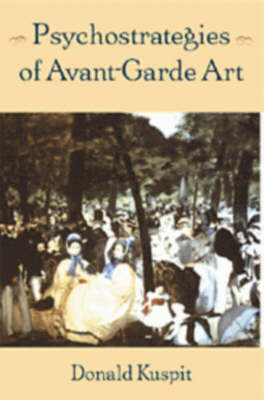Donald Kuspit offers here an innovative psychoanalytic interpretation of avant-garde art, from its origins in the nineteenth century to its demise in the late-twentieth. Avant-garde art, the author argues, is a response to the conditions of modernity, particularly the crowd, which undermines and destroys the artist's sense of self. The avant-garde artist uses psychostrategies in order to restore his sense of self. These include a close identification with his medium, which becomes a 'signature substance' into which he escapes; making hallucinatory art in which he shows his own insanity, which becomes a way of escaping the pseudo-sanity of the crowd; or trying to transcend the crowd altogether by escaping into a world of abstraction, which functions in a religious way to afford an 'oceanic experience'. Drawing on numerous examples of avant-garde art, Kuspit makes extensive use of psychoanalysis, largely from British object-relational theory, to underline and elaborate his ideas. An extensive reinterpretation of Manet, officially the first avant-garde artist, and in whom all the various psychostrategies exist in seminal form, forms a keynote to this study.
- ISBN13 9780521452779
- Publish Date 19 June 2000
- Publish Status Inactive
- Out of Print 23 May 2011
- Publish Country GB
- Imprint Cambridge University Press
- Format Hardcover
- Pages 304
- Language English
